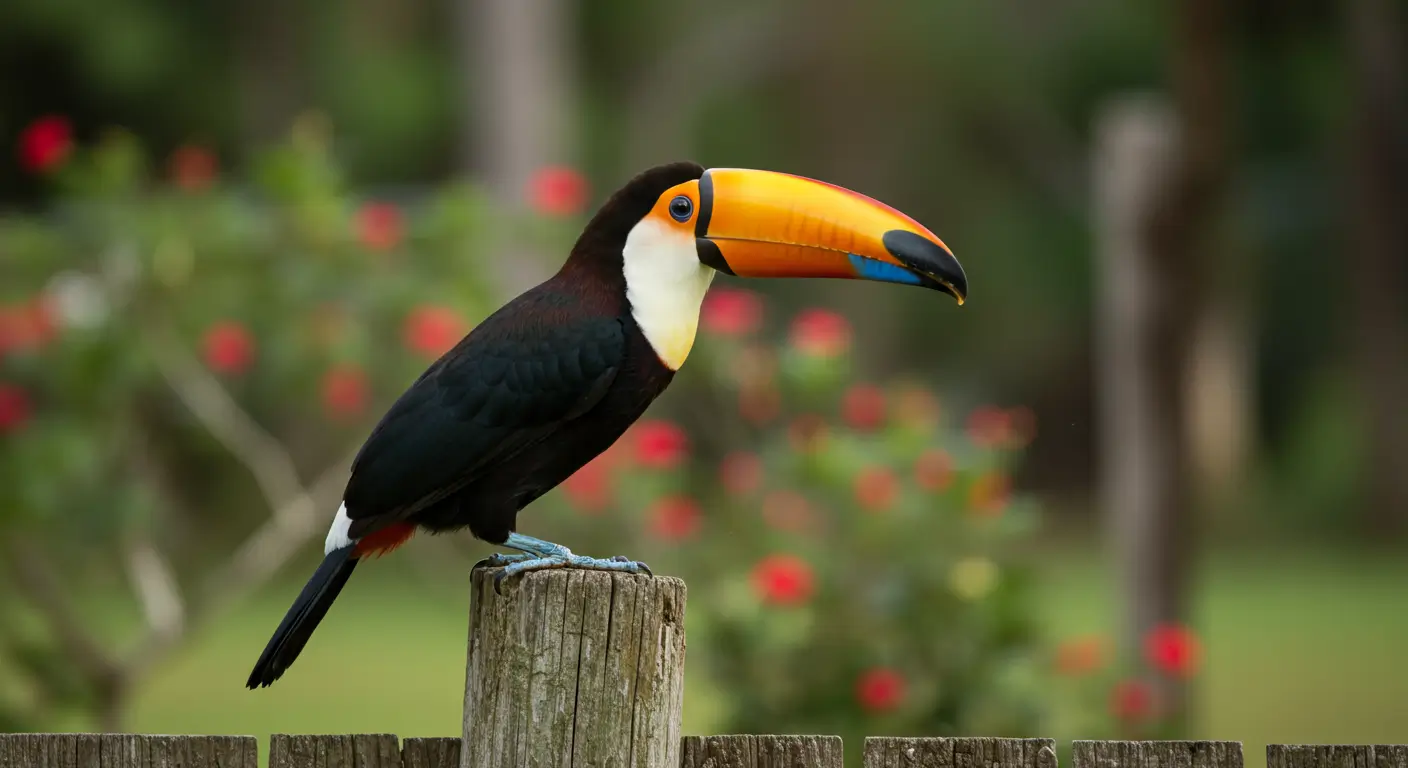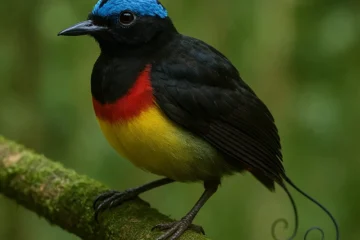The Keel-Billed Toucan is a colorful bird known for its large and attractive beak. It lives in tropical rainforests, mainly in Central and South America.
Its beak is surprisingly light and hollow despite being large in size. This helps it grab fruit, insects, and small reptiles. These birds are social and often live in small flocks. Their loud and croaking calls echo through the forest.
Keel-Billed Toucan Images
General Characteristics of Keel-Billed Toucan
Despite their long beak, these birds also possess many characteristics which are different from other birds.
The price range for a Keel-Billed Toucan in the United States is approximately $1,200 to $4,500, depending on factors such as age, tameness, breeding status, and the seller’s reputation. Keel-billed toucans live around 15 to 20 years in the wild, while facing threats like predators and habitat loss. They can live up to 25 years due to a controlled diet and veterinary support in captivity with proper care. This bird has many interesting things included in its nature which is no less than a good example of diversity in the behavior among various bird species. Young Keel-Billed Toucans don’t have the bright and rainbow-colored beak that adults do. Their beak slowly develops its signature mix of green, orange, red, and blue as they grow. This color change helps them blend into the dense jungle canopies of Central and South America. The beak is not heavy despite its large size. It is made of keratin and has a honeycomb-like structure inside which is responsible for its lightweight. The toucan uses its beak to release body heat which resembles to how elephants use their ears to cool down. These birds don’t just settle on a branch like most birds at night. They tuck their beak under their wings, pull their tail up, and roll into a small ball. This compact sleeping position helps them conserve body heat and stay hidden from predators. Keel-Billed Toucans make frog-like croaking sounds, which is very different from the usual chirping of birds. Their calls can be heard from half a mile away in the jungle. These birds are very social and love to play. They toss fruit to each other and even engage in gentle beak-fencing games. This behavior strengthens their bonds and helps young toucans learn how to use their beaks effectively. Keel-Billed Toucans have a special way of eating. They use their beak to peel off the fruit’s skin and eat only the soft inside instead of biting into fruit. This helps them avoid bitter or toxic parts of some fruits. Keel-Billed Toucans are not strong fliers unlike many birds. They glide more than they flap and move between trees in short bursts. Their lightweight bones and broad beak make them better at jumping between branches than soaring in the sky. Toucans are known for eating fruits, but they also eat small reptiles and bird eggs. Some snake species stay near toucan nests and wait to steal their eggs. The toucans sometimes eat small snakes that pass too close. They tend to be much quieter in captivity despite being loud in the wild. This makes them unique among tropical birds, as most species become louder when kept as pets or in zoos. They can’t digest large seeds even though they eat many fruits. They spit them out which helps spread different tree species in the wild. This makes them important seed dispersers for rainforests. Keel-Billed Toucans live in small groups of 6 to 12 birds. There is a clear pecking order within these flocks where dominant birds eat first and get the best nesting spots. Keel-Billed Toucans can’t tolerate cold temperatures. This is why they are not found naturally in the USA, except in zoos or as exotic pets. They would struggle to survive outside even in warm states like Florida. Toucans sometimes catch large insects mid-air and crush them before swallowing. This adds protein to their diet, which is important for their health. Keel-Billed Toucans have a strong grip on branches which allows them to jump forward and even backward. This unique movement helps them cross dense treetops with speed and agility. They nest in small tree holes despite having large bodies and beaks. They fold their tail and tuck in their beak to fit inside. This makes them look much smaller than they actually are. These birds do not offer very frequent sightseeing and it is always a rare moment to see their activities. You should never miss the chance to take good clicks of this bird and here are some pro tips for that: Males are usually a little bigger than females. Their bills (beaks) may also be slightly longer, but not by much. Both males and females look the same in color. They have bright green, orange, red, blue, and yellow shades — no clear color difference between sexes. During breeding season, males might be more active or vocal. You can find them in zoos and aviaries, like the San Diego Zoo and Miami Zoo, since they are native to Central and South America, not the U.S. It mainly eats fruit but also enjoys insects, eggs, and small reptiles in the wild. The price of a Keel-Billed Toucan in the United States typically ranges from $1,200 to $4,500, depending on factors such as age, tameness, breeding status, and the seller’s reputation. No, the Keel-Billed Toucan is not currently endangered.
General Characteristic
Keel-Billed Toucan’s Feature
Scientific Name
Ramphastos sulfuratus
Size
About 17–22 inches
Weight
Around 380–500 g
Lifespan
15–20 years in captivity
Habitat
Tropical forests and lowlands
Beak Color
Green, orange, red, and blue mix
Beak Length
About 5–6 inches
Diet
Fruits, insects, small lizards
Behavior
Social, playful, and vocal
Flying Ability
Short, hopping flights

Price of Keel-Billed Toucan
Life Span of Keel-Billed Toucan
Interesting Facts Regarding Keel-Billed Toucan
1. Beak Changes Color as They Grow
2. Use Their Beak to Stay Cool

3. Sleep in a Ball Shape
4. Different Way of Communication
5. Play with Each Other Using Their Beaks
6. Expert Fruit Peelers
7. Can’t Fly Very Well

8. Have Unique Relationship with Snakes
9. They Are Surprisingly Quiet in Captivity
10. They Can’t Digest Certain Seeds
11. Their Flocks Have a Strict Social Order
12. Can’t Survive in Cold Weather

13. Beak is Strong to Catch Insects
14. Can Jump Backward
15. Nesting Holes Are Tiny for Their Size
Sightseeing of Keel-Billed Toucan in USA
Location
State in Which it is Located
San Diego Zoo
California
Dallas World Aquarium
Texas
St. Augustine Alligator Farm
Florida
Denver Zoo
Colorado
Smithsonian’s National Zoo
Washington D.C.
Houston Zoo
Texas
Bronx Zoo
New York
Miami Zoo
Florida

Pro Tips for Photography of Keel-Billed Toucan

Keel-Billed Toucan: Male vs Female
Most Asked Question
1. Where can you see a Keel-Billed Toucan in the USA?
2. What does a Keel-Billed Toucan eat?
3. How much does a Keel-Billed Toucan cost?
4. is the Keel-Billed Toucan endangered?









